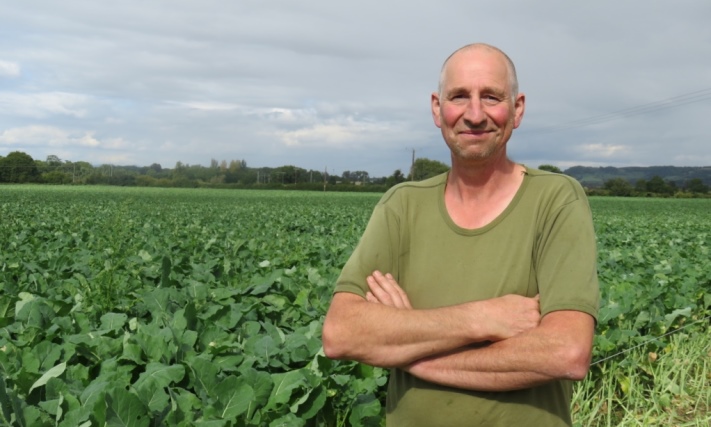Winfred offers dairy cows variety in their autumn grazing
Winfred surpasses Maris Kestrel kale on ancient Gloucester farm
The three Price brothers who farm at Frocester Court in Gloucestershire have grown a brassica crop for cow grazing in their five-year farming rotation for many years; firstly kale and for the past ten years Winfred.
Frocester Court is archeologically and historically significant, with remains of a roman villa uncovered by the brothers’ father Edward Price. The 56-metre Estate Barn built between 1284 and 1306, is one of the longest in the country and 700 years on is still fulfilling its original function as an agricultural building.
In 1935 Eddie’s father moved to Frocester Court farm as tenant farmer of 102ha and Eddie took over the running of the farm in 1950, establishing a herd of dairy cows. In 1969 he bought the farm, and later purchased an additional 22ha.
Winfred is a semi-dwarf rape available from Oliver Seeds - a cross between stubble turnip and kale, which produces high protein, leafy forage in six to eight weeks from sowing.

Richard Price and Winfred
High seedling vigour gives more reliable establishment than kale and it has better winter hardiness than stubble turnips. High leaf to stem ratio and good disease resistance gives good palatability.
At Frocester Court, direct-drilled Winfred follows winter wheat and an Italian ryegrass catch crop used as an early turn out for the cows.
A dressing of 50kg/ha of 0:20:30 fertiliser is applied before a rotaseeder is used to sow 1kg/ha of seed, together with 1kg of slug pellets. This opens an inch-wide drill before placing the seeds into the slot, ten inches apart. This creates a firm base, which is better able to stand up to cow grazing. The surface is then chain harrowed to fill in the drill slots.
The crop this year was drilled on 1 July by a local contractor. 40kg/ha of nitrogen was applied after three weeks growth, with a further 40kg/ha three weeks later. Ten weeks after drilling the cows were starting to eat it.
“We always used to grow Maris Kestrel kale, but this was easily attacked by flea beetle after the seed dressing was no longer available to use,” explains Richard Price.
“Now we plant Winfred during Wimbledon and Glastonbury – so more often than not it will rain! And it grows so quickly, too fast for flea beetle or weeds like fat hen to catch up with it.”
The herd of 80 autumn-calving crossbred cows strip graze the Winfred in the morning. The 7.28-ha field will last the cows until Christmas and they are offered a fresh section every day. The soil is mainly gravel over clay, which allows winter grazing without too much poaching.
The Prices are not organic but run a minimal input system, which balances their resources and labour, with Richard in charge of the 220-ewe flock and crops, Arthur taking care of the youngstock and Matthew responsible for the milking cows.
The farm is almost self sufficient in feed, with homegrown barley mill and mixed with a 16% protein blend and minerals to feed to the dairy cows and sheep. The only other bought-in feed is calf starter food. The cows produce an average milk yield of 7,000 litres.
Once the Winfred has been eaten, the field is ploughed and planted to a meadow fescue, timothy and white clover mix in spring. The other grass mixture used on the farm is a late heading perennial ryegrass/white clover mix sown in the autumn after the winter barley has been harvested. Both leys are grown for three years to provide grazing and silage, until the field goes back into winter wheat, of which around18.4ha is grown for seed.
“Winfred suits our ground and rotation and offers a great deal for the cows to eat during the autumn,” says Richard. “I am sure we shall be growing it for many years to come.
This article first appeared in British Dairying – November 2017
